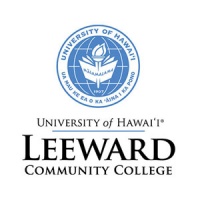
Lecture Description
Solutions form because of two main reasons. First, the random motion of the solute and solvent particles causes both solute and solvent to mix together. This is called the entropic effect - particles tend towards more disorganized (or mixed) configuration. Second, there are forces among the particles that can either hinder or help solutions to form. This is called the energetic effect. If solute particles are held together by weak forces and solvent particles as well, but the forces that between solute and solvent are strong, then the forces will help the solution form, and the process would be exothermic, meaning heat would be released. However, if the solute particles are held together by strong forces and the solvent as well, but the forces between solute and solvent are weak, then this acts to hinder solution formation, and extra energy in the form of heat would be required for the solution to form - the process would be endothermic. The energetic effect only comes into play when there are liquids and solids involved. It does not affect solution formation when there are only gases, because gas particles are already separated from one another.
Introduction is filmed on location at Kualoa Regional Park, with Mokoli'i Island (Chinaman's Hat) in the background.
General Chemistry II - Lecture 8 - Solution Formation
These videos are being made because I love teaching general chemistry. Also, I want to provide clear videos that are captioned for the deaf and hard-of-hearing, as well as for international students who use English as a second language (ESL). These video lectures are being used to assess such students as well as hearing students. However, any student of general chemistry should find the lectures very useful. Clear and concise explanations, colorful notes, and simple diagrams are used. All videos are uploaded under the Creative Commons license, so please feel free to use them in any way you.
These videos are hard work on my part, and I enjoy making them. If you continue to watch, then you will not only learn chemistry, but also some interesting things about the state of Hawai'i. Each video normally begins with a short clip taken on location, from somewhere in the Hawaiian Islands. And if you are on the island of O'ahu or happen to visit, then please feel free to stop by Leeward Community College say hello.
Enjoy and Aloha !!!
JAT
Jeffrey A Tibbitt, Ph.D
Lecturer of Chemistry
Office PS-206, (808) 455-0264
jtibbitt@hawaii.edu
Leeward Community College
Pearl City, Hawai'i
** English Captions **
Course Index
- Introduction
- Review Of General Chemistry 1
- Intermolecular Forces And Phases Of Matter
- Phase Change Calculations
- Phase Changes I - Vapor Pressure
- Phase Changes II - Phase Diagrams
- Crystal Lattices of Solid Structures
- Solution Concentrations
- Solution Formation
- Solubility of a Solute
- The Colligative Properties Of Solutions
- The Rate Of A Chemical Reaction
- The Differential Rate Law
- The Integrated Rate Law
- Rate, Temperature And The Arrhenius Equation
Course Description
This collection of 15 lectures with Prof. Tibbitt a community college in Hawaii takes you through all the fundamentals of general chemistry covered in college. His lectures are presented in a blackboard, with colorful and beautiful calligraphy.



 Searching...
Searching...



